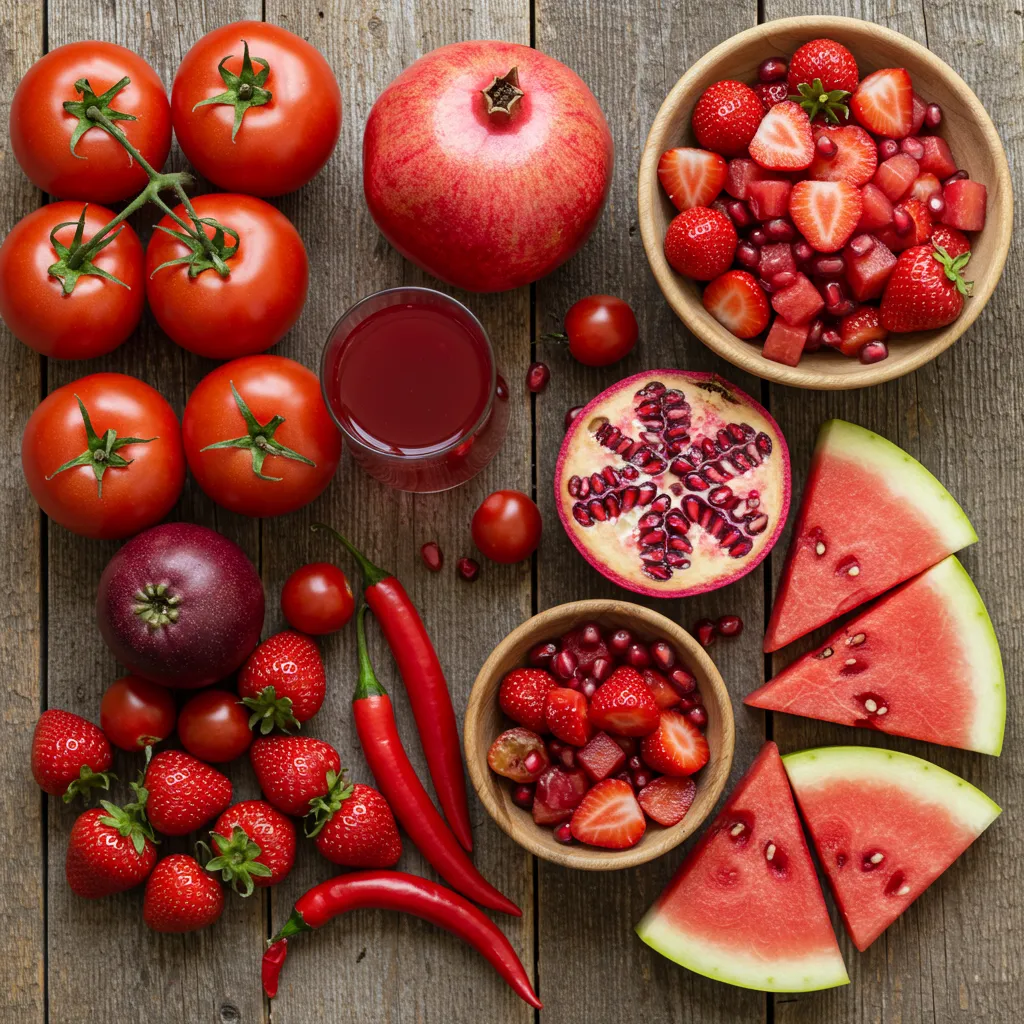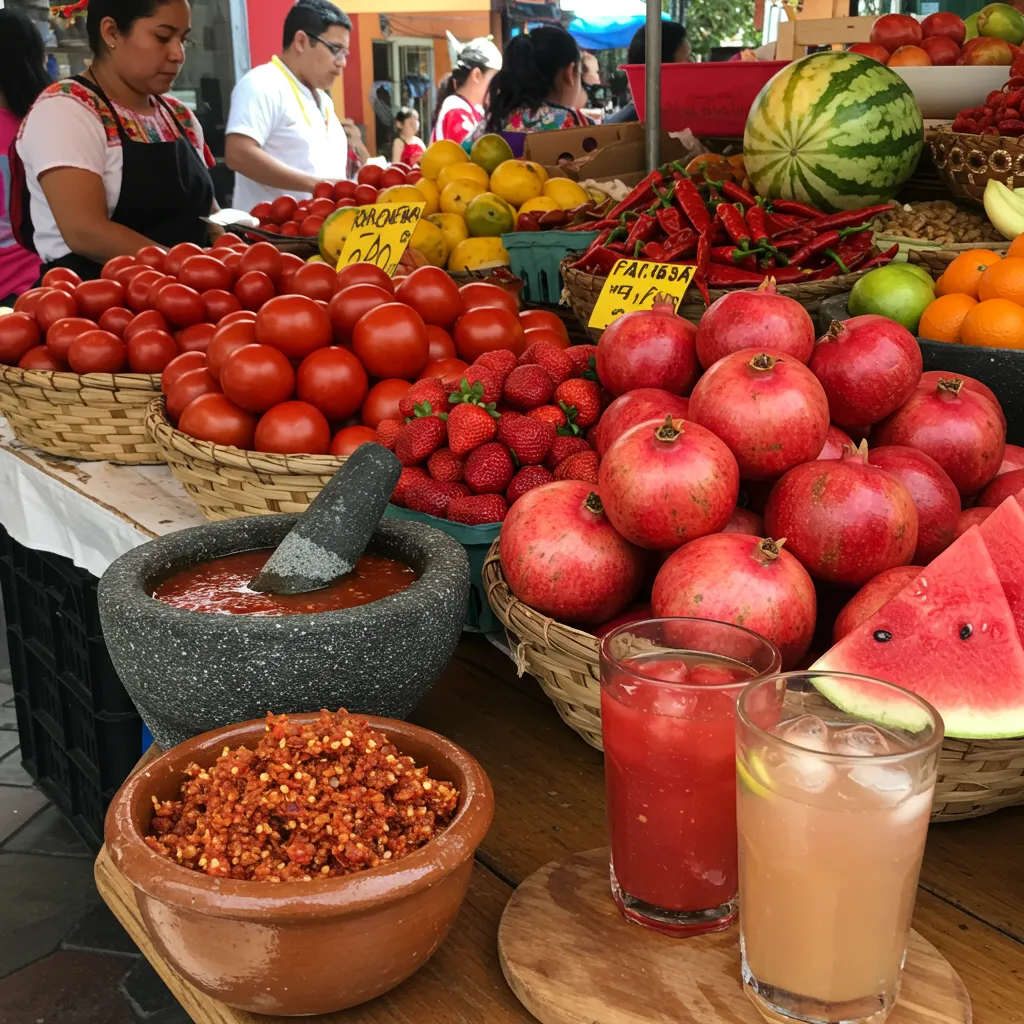Mexican cuisine is renowned for its bold flavors and vibrant ingredients, with red fruits playing a crucial role in this rich culinary tradition. These fruits, celebrated for their intense color, deep flavor, and high nutritional value, have been essential in Mexican cooking for centuries. Whether in traditional dishes or modern culinary innovations, red fruits enhance both the visual appeal and the nutritional profile of meals.
Deeply woven into Mexico’s culinary identity, these fruits appear in everyday meals and festive celebrations. This article explores their cultural significance, culinary applications, health benefits, and the sustainable farming practices that preserve their production.
The Cultural Significance of Red Fruits in Mexico
Red fruits hold deep cultural meaning in Mexico, symbolizing life, vibrancy, and celebration. Tomatoes, for instance, have been a staple of Mexican cuisine since the time of the Aztecs, who cultivated them as early as 700 AD. Known as xitomatl, tomatoes became indispensable due to their versatility and bold flavor. Today, they are essential in dishes like salsa roja, a flavorful sauce that enhances everything from tacos to enchiladas.
Similarly, pomegranates carry cultural significance. Their bright red seeds are a key element in Chiles en Nogada, a dish that visually represents the Mexican flag with its tricolor presentation. Beyond their culinary role, pomegranates symbolize fertility and abundance in Mexican folklore.
For more insights into how red fruits are integrated into traditional recipes, visit Mexico In My Kitchen for authentic culinary inspiration.
Popular Red Fruits in Mexican Cuisine
Several red fruits dominate Mexican kitchens and gardens, each contributing unique flavors to traditional dishes.
Tomatoes
Tomatoes serve as the foundation for countless Mexican recipes. Whether blended into rich stews like pozole rojo or diced into fresh pico de gallo, their sweet yet tangy flavor enhances a variety of dishes. Additionally, they provide essential nutrients, including vitamins A and C, as well as potassium.
Cooking Tip: Roasting tomatoes on a grill before blending enhances their smoky flavor.
Chili Peppers
Red chili peppers, such as guajillo and ancho, introduce heat and complexity to Mexican cuisine. These peppers frequently appear in sauces, marinades, and mole, a traditional sauce blending chilies with chocolate and spices.
Tip: Rehydrating dried chilies in warm water before blending intensifies their depth of flavor.
Strawberries (Fresas)
Grown in regions like Irapuato—Mexico’s “Strawberry Capital”—these berries are widely used in desserts, smoothies, and snacks. A classic way to enjoy them is with a drizzle of lime juice and a sprinkle of chili powder, creating a beloved Mexican treat.
For a refreshing combination of red fruits, check out Mexican Fruit Salad recipes.
Watermelon (Sandía)
A summer favorite, watermelon is commonly sold by street vendors in thick wedges. It is also blended into agua fresca de sandía, a refreshing beverage made with watermelon, water, lime, and a touch of sugar.
Serving Idea: Garnish with a sprig of mint for an extra cooling effect.
Pomegranate (Granada)
With its ruby-red seeds, pomegranate serves as more than just a garnish—it plays a crucial role in Chiles en Nogada, adding a sweet contrast to the dish’s savory filling.
Indigenous Red Fruits of Mexico
Mexico’s biodiversity has given rise to unique red fruits that are rare outside the region. These indigenous varieties reflect the country’s agricultural heritage and culinary ingenuity.
Pitaya (Dragon Fruit)
With its striking pink or red skin, pitaya stands out visually. Common in tropical regions, it frequently appears in aguas frescas and desserts. Beyond its vibrant appearance, it offers high fiber and antioxidant content.
Capulín (Wild Cherry)
These tiny, tart cherries are often transformed into jams and syrups. Indigenous communities have traditionally relied on capulín, incorporating it into ceremonial dishes and natural remedies.
Tejocote (Mexican Hawthorn)
Resembling a small crab apple, tejocote is a key ingredient in Ponche Navideño, a spiced Christmas punch. It is also valued for its digestive and respiratory health benefits.
To learn more about creative ways to use these fruits, explore How to Make Fruit Salad Step by Step.
Health Benefits of Red Fruits

Nutritional Value
Red fruits such as tomatoes and strawberries are rich in vitamin C, which supports immune function. Meanwhile, pomegranates and watermelons provide powerful antioxidants that help combat free radicals and reduce the risk of chronic diseases. Additionally, chili peppers contain capsaicin, which offers anti-inflammatory benefits and may boost metabolism.
Medicinal Uses
For centuries, red fruits have been integral to traditional medicine. Tomatoes are believed to aid digestion, while pomegranate seeds may help reduce inflammation. Indigenous communities also consume tepitaya for its detoxifying properties.
For official nutritional data, refer to USDA FoodData Central.
Culinary Creations Featuring Red Fruits
Red fruits inspire a variety of delicious Mexican dishes and drinks, including:
- Salsa Roja – A classic tomato-based sauce perfect for tacos, burritos, and chips.
- Agua Fresca de Sandía – A refreshing watermelon drink, ideal for summer.
- Chiles en Nogada – A festive dish featuring stuffed poblano peppers, walnut cream sauce, and pomegranate garnish.
- Strawberry Flan – A twist on traditional flan, enhanced with strawberry puree.
Sustainable Farming and the Future of Red Fruits
Impact of Climate Change
Shifting climate patterns present challenges for Mexican farmers. To protect their crops, many are adopting sustainable strategies such as drip irrigation and shade farming.
Supporting Local Economies
Purchasing red fruits from local markets not only supports farmers but also helps preserve biodiversity. Many small-scale farmers rely on heirloom seeds, ensuring the survival of unique fruit varieties.
FAQs
What are the most common red fruits in Mexico?
Tomatoes, chili peppers, strawberries, and watermelons are widely used.
Which indigenous red fruits are unique to Mexico?
Pitaya and tejocote are distinct to the region and have unique flavors.
What are the health benefits of eating red fruits?
They provide essential vitamins, antioxidants, and medicinal properties, supporting overall health.
How can I incorporate red fruits into my diet?
Try salsa roja, agua fresca, or strawberry flan for nutritious options.
Are Mexican red fruits available outside of Mexico?
Many are exported globally, but indigenous varieties can be found in specialty markets.
Final Thoughts
Red fruits are deeply embedded in Mexican cuisine, offering both cultural significance and health benefits. From tomatoes and chili peppers to pomegranates and tejocote, these fruits enhance countless dishes while preserving Mexico’s rich agricultural heritage. By choosing locally sourced produce and supporting sustainable farming, consumers can help protect these vital culinary treasures for future generations.

